Posts Tagged: Andrew Pfeifer
Surprise! A Little Brown Package in the UC Davis Arboretum
Surprise! Surprise! You never know what you'll see when you're strolling through the 100-acre UC Davis Arboretum and Public Garden, a treasure to...
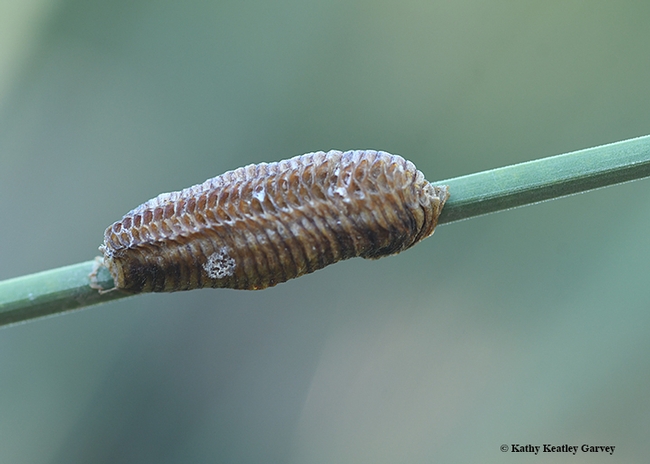
A praying mantis egg case or ootheca, clings to a Mexican grass tree, Dasylirion longissimum, in the UC Davis Arboreum. (Photo by Kathy Keatley Garvey)
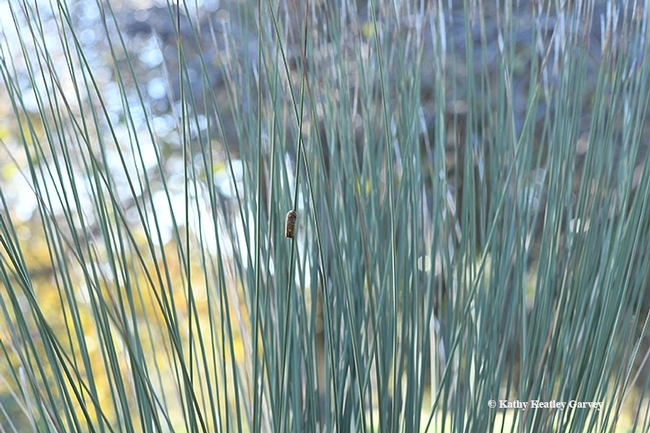
From a distance, the ootheca on the Mexican grass tree can easily be spotted--if you're looking for it. (Photo by Kathy Keatley Garvey)
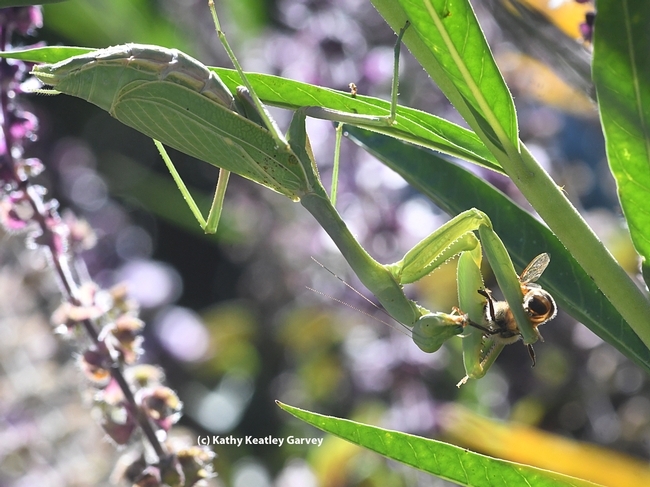
The ootheca or praying mantis egg case above is probably the work of a Stagmomantis limbata, like this one, shown here feasting on a honey bee in Vacaville, Calif. (Photo by Kathy Keatley Garvey)
The World of Praying Mantids: A Question Posed, A Question Answered
Last summer you may have happened upon praying mantids mating. Hopefully, the male didn't lose his head. Which begs a question asked by a reader:...
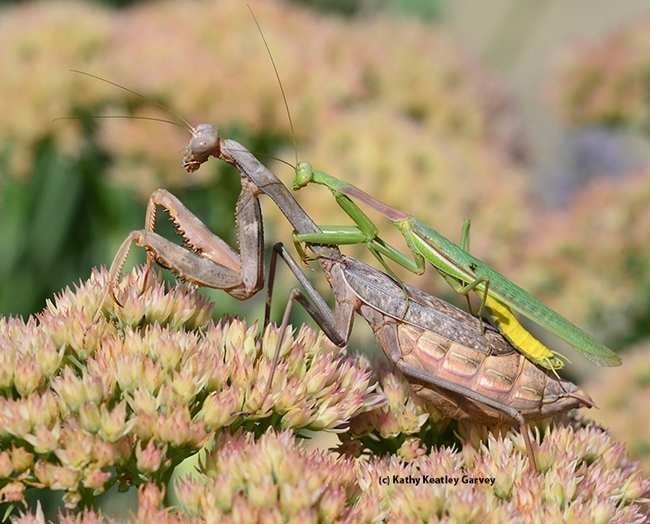
Mating pair of Stagmomantis limbata, a common mantis in Vacaville, Calif. The male did not lose his head. (Photo by Kathy Keatley Garvey)
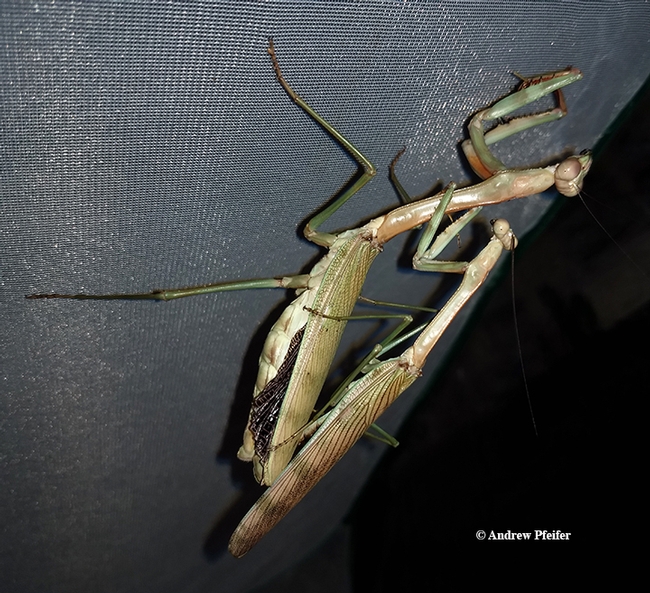
Mating pair of mega mantids, Plistospilota guineensis. These mantids are part of Andrew Pfeifer's collection in Monroe County, N.C. See the result below! (Photo by Andrew Pfeifer)
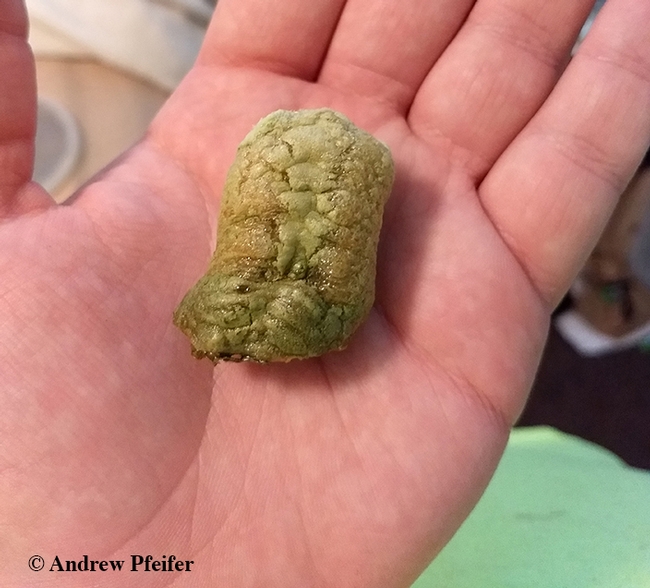
Praying mantis authority Andrew Pfeifer, who administers the public Facebook page, Mantis Keepers, captured this image of his Plistospilota guineensis ootheca. It's about the size of a large chicken egg. (Photo by Andrew Pfeifer)
Meet 'Mantis Master Keeper' Andrew Pfeifer
Who isn't fascinated by a praying mantis, that pre-historic looking predator that lurks on a plant and snags honey bees, butterflies and other...
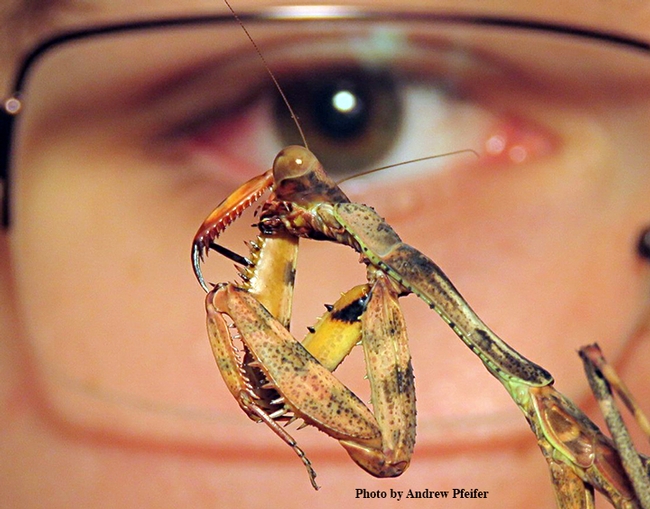
Andrew Pfeifer is eye to eye with a female Parasphendale affinis nymph. (Photo by Andrew Pfeifer)

A male Parasphendale affinis (budwing mantis) (Photo by Andrew Pfeifer)
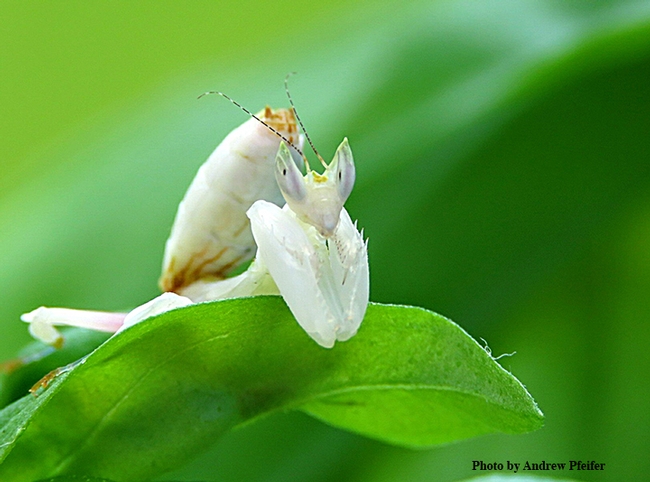
An orchid praying mantis that Andrew Pfeifer bred and reared. (Photo by Andrew Pfeifer)
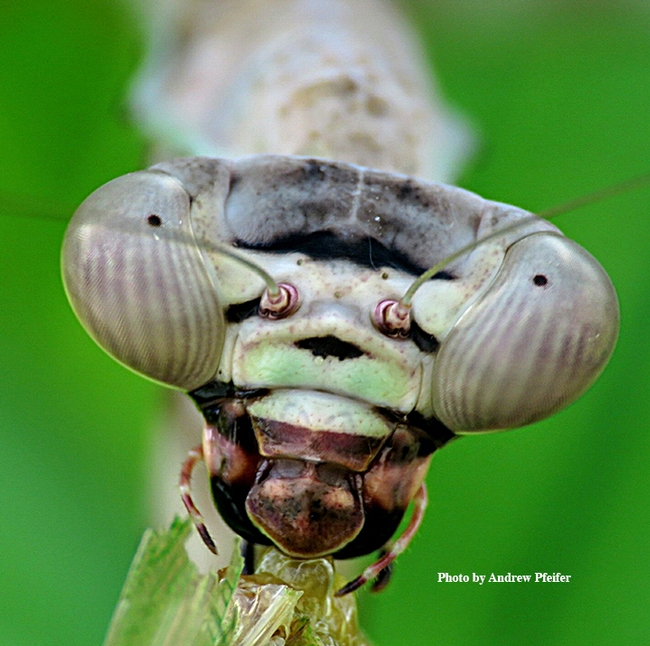
This amazing photo is an adult female Parasphendale affinis. (Photo by Andrew Pfeifer)
Let Us Prey!
Everybody eats in the pollinator garden. Everybody. The pollinators in our garden in Vacaville, Calif., sip the nectar. They include honey bees,...
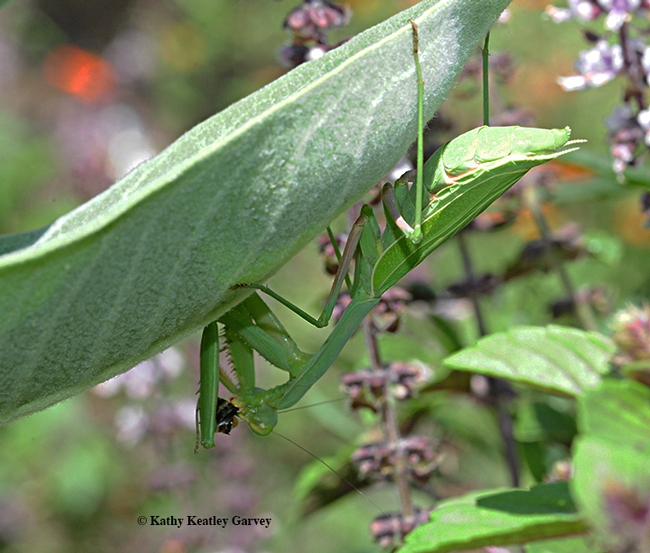
A praying mantis, Stagmomantis limbata (as identified by Andrew Pfeifer) clings to a showy milkweed leaf as she dines on a longhorn bee. (Photo by Kathy Keatley Garvey)
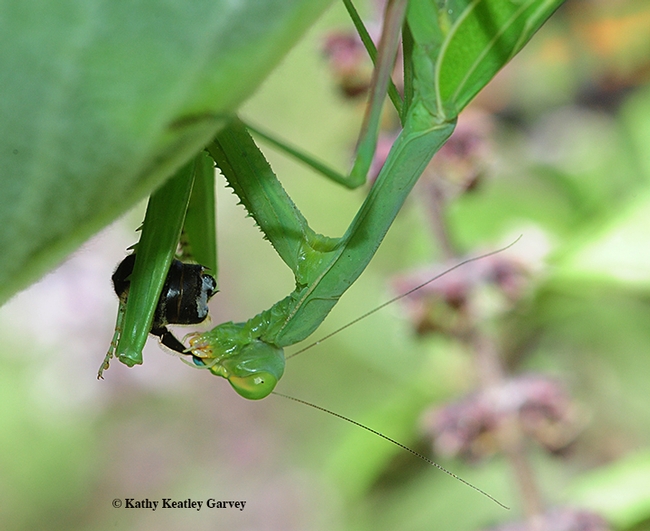
Praying mantis is a cunning predator. The score: praying mantis: 1. Longhorn bee: 0. (Photo by Kathy Keatley Garvey)
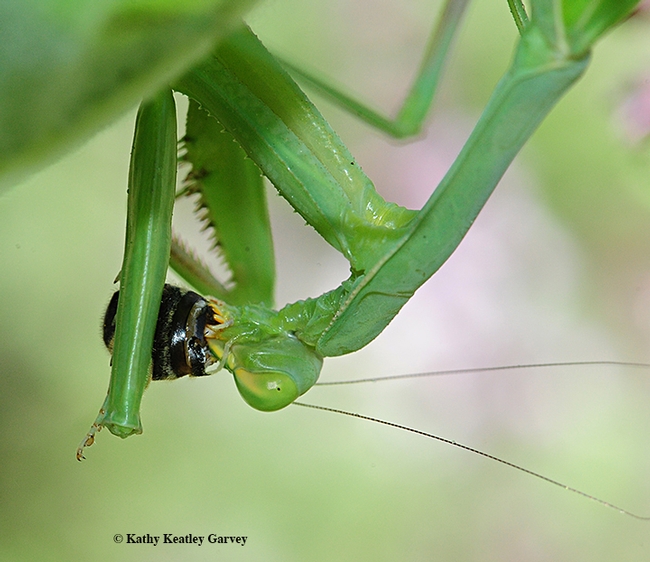
Nature's way; praying mantis devours her meal. The longhorn bee, probably a Melissodes agilis, erred in flying too close to the predator. (Photo by Kathy Keatley Garvey)
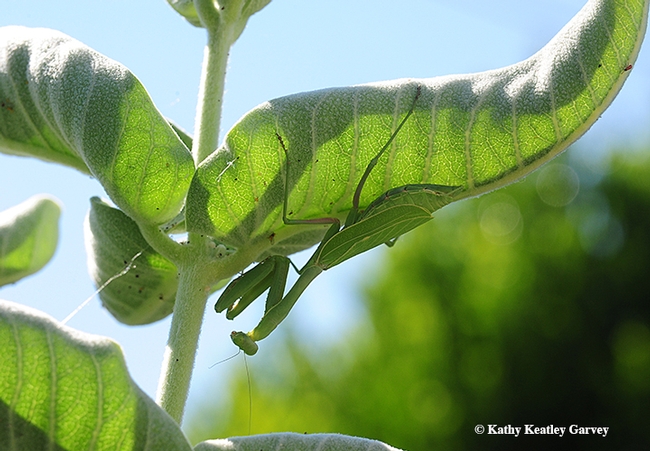
After her meal, the praying mantis climbs toward the top of the milkweed to look for more "meal movement." (Photo by Kathy Keatley Garvey)

